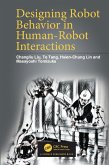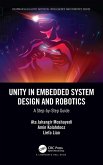With contributions from the field's leading experts and rising pioneers, this collection presents state of the art knowledge and a range of design methods, tools, and techniques, which cover the various phases of an HRI project. This book is accessible to an interdisciplinary audience, and does not assume any design knowledge. It provides actionable resources whose efficacy have been tested and proven in existing research.
This manual is essential for HRI design students, researchers, and practitioners alike. It offers crucial guidance for the processes involved in robot and HRI design, marking a significant stride toward advancing the HRI landscape.
The Open Access version of this book, available at http://www.taylorfrancis.com, has been made available under a Creative Commons Attribution-Non Commercial-No Derivatives (CC-BY-NC-ND) 4.0 license.
Dieser Download kann aus rechtlichen Gründen nur mit Rechnungsadresse in A, B, BG, CY, CZ, D, DK, EW, E, FIN, F, GR, HR, H, IRL, I, LT, L, LR, M, NL, PL, P, R, S, SLO, SK ausgeliefert werden.
- Prof. dr. ir. David Abbink, Delft University of Technology, Scientific Director of FRAIM, the Netherlands
"This book presents robots not as a sci-fi trope but as a realm of design possibility. It will be instrumental to helping to reshape tomorrow's robots so that they help fulfill human needs and desires. It is rich with viewpoints and novel perspectives which help to equip designers with what they need to build ground-breaking robots."
- Wendy Ju, Jacobs Technion-Cornell Institute at Cornell Tech, USA
"Whenever we embark on the development of innovative robotic applications working closely with people in our daily lives, we're faced with the intricate challenge of crafting interactions for these state-of-the-art creations. In this complex endeavor, no single design choice reigns supreme. This book provides ideas about diverse design choices to explore and important aspects we should carefully think during the design process. I highly recommend this book for students and researchers who are interested in the design of such interactions."
-Takayuki Kanda, Graduate School of Informatics, Kyoto University, Japan
"Good design often goes unnoticed, but good design methods deserve our full attention. This book packs expertise from various fields into an exciting guide on how to design robots and their interaction with people, perfect for robot builders, students, and researchers."
-Tony Belpaeme, Ghent University, Belgium









